Carbil: Difference between revisions
| Line 3: | Line 3: | ||
== Nomenclature of the carbon flakes used == | == Nomenclature of the carbon flakes used == | ||
The | Carbon flakes were generated by starting with four carbon atoms in fixed positions, forming three 120 degree angles, and consecutively completing three or more carbon atoms on the edge nearest to the centre to a complete hexagonal or pentagonal cycle. The location of the pentagonal cycles (defects) was chosen randomly, but then a manual selection was done and the least symmetric flakes were discarded. Eight types with different locations of defects were chosen to construct the CDC carbon model. | ||
The flakes were created on a single plane first, keeping only the topology and bond lengths in correspondence with the force field. To get their real 3-dimensional shape, they were equilibrated using a MD simulation 0.1ns long with 0.1fs timestep on room temperature (293K) in vacuo. | |||
The initial (topological) shapes and their shapes after MD simulation are shown below. | |||
=== Flake type 0 === | === Flake type 0 === | ||
Revision as of 16:30, 7 June 2010
Generation of the simulation box
Nomenclature of the carbon flakes used
Carbon flakes were generated by starting with four carbon atoms in fixed positions, forming three 120 degree angles, and consecutively completing three or more carbon atoms on the edge nearest to the centre to a complete hexagonal or pentagonal cycle. The location of the pentagonal cycles (defects) was chosen randomly, but then a manual selection was done and the least symmetric flakes were discarded. Eight types with different locations of defects were chosen to construct the CDC carbon model. The flakes were created on a single plane first, keeping only the topology and bond lengths in correspondence with the force field. To get their real 3-dimensional shape, they were equilibrated using a MD simulation 0.1ns long with 0.1fs timestep on room temperature (293K) in vacuo. The initial (topological) shapes and their shapes after MD simulation are shown below.
Flake type 0
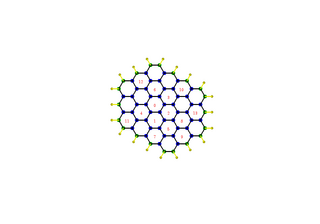
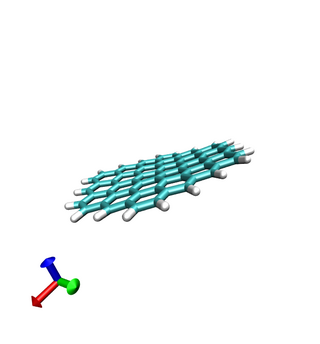 File:Carbil-flake0.xyz File:Carbil-flake0.FIELD
File:Carbil-flake0.xyz File:Carbil-flake0.FIELD
Flat sheet with 24 cycles and no defects.
Flake type 1
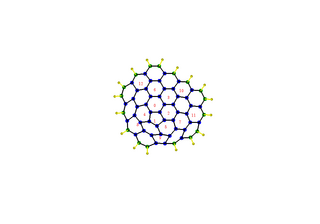
 File:Carbil-flake1.xyz File:Carbil-flake1.FIELD
File:Carbil-flake1.xyz File:Carbil-flake1.FIELD
Curved sheet with 23 normal hexagon cycles and one defect in the form of a pentagonal cycle in the middle of the flake.
Flake type 2
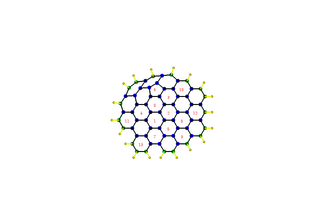
 File:Carbil-flake2.xyz File:Carbil-flake2.FIELD
File:Carbil-flake2.xyz File:Carbil-flake2.FIELD
Sheet with one defect near the edge.
Flake type 3
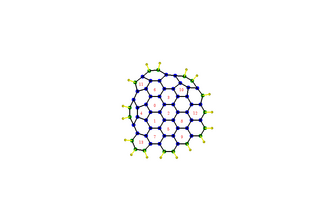
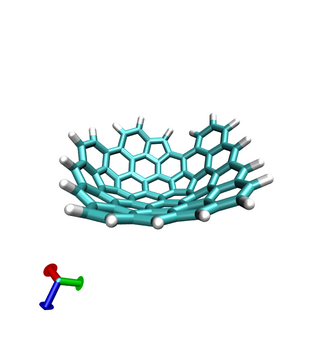 File:Carbil-flake3.xyz File:Carbil-flake3.FIELD
File:Carbil-flake3.xyz File:Carbil-flake3.FIELD
Sheet with two defects: one on the edge, another near the edge.
Flake type 4

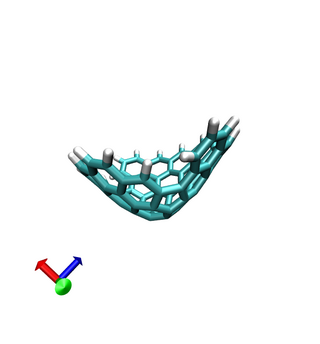 File:Carbil-flake4.xyz File:Carbil-flake4.FIELD
File:Carbil-flake4.xyz File:Carbil-flake4.FIELD
Sheet with three defects located on a straight line - one in the middle, two on the edges.
Flake type 5
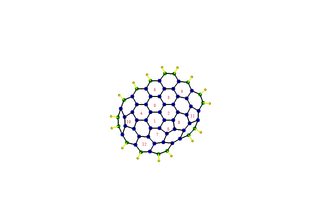
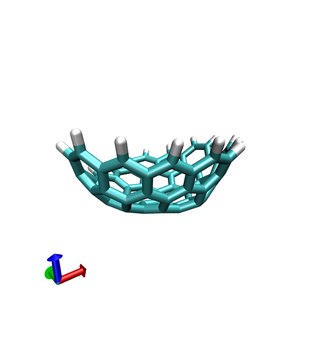 File:Carbil-flake5.xyz File:Carbil-flake5.FIELD
File:Carbil-flake5.xyz File:Carbil-flake5.FIELD
Two defects near the edges.
Flake type 6
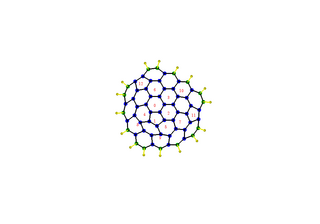
 File:Carbil-flake6.xyz File:Carbil-flake6.FIELD
File:Carbil-flake6.xyz File:Carbil-flake6.FIELD
One defect in the middle, two on the edges.
Flake type 7
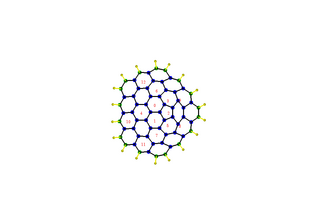
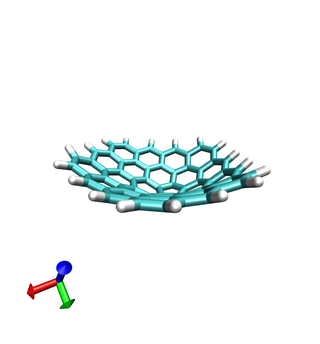 File:Carbil-flake7.xyz File:Carbil-flake7.FIELD
File:Carbil-flake7.xyz File:Carbil-flake7.FIELD
Sheet with one defect in the middle.